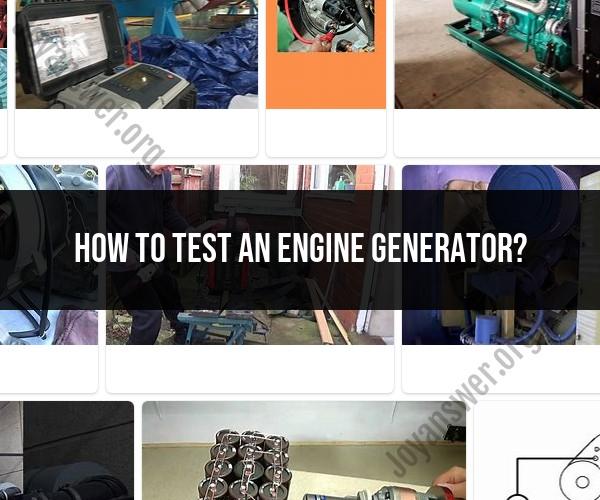How to test an engine generator?
Testing an engine generator is crucial to ensure its reliable performance when needed. Here are the general steps to test an engine generator:
Safety Precautions: Before starting any testing procedures, ensure that all safety precautions are in place. This includes checking for any flammable materials nearby, ensuring proper ventilation, and having fire extinguishing equipment on hand.
Visual Inspection: Conduct a visual inspection of the generator and its components. Look for any signs of damage, loose connections, or worn-out parts. Ensure that there are no visible leaks of fuel or coolant.
Fuel System Check: Verify that there is an adequate fuel supply for the generator. Ensure that the fuel lines are free from blockages and that the fuel filters are clean. Check the fuel quality to prevent any issues with contamination.
Cooling System Inspection: Examine the cooling system, including the radiator and hoses, to make sure they are in good condition. Ensure that the coolant level is correct and that there are no coolant leaks.
Battery Test: Test the generator's starting batteries to ensure they are fully charged and in good working condition. Weak or dead batteries can prevent the generator from starting when needed.
Load Bank Testing: Load bank testing is a crucial step in assessing the generator's performance under a controlled load. A load bank simulates the electrical load that the generator will experience during operation. It helps identify any issues with voltage regulation, frequency stability, and overall performance.
Start-up Test: Initiate a start-up test to ensure that the generator can be started without any problems. Pay attention to how long it takes for the generator to reach its operating speed and stabilize.
Voltage and Frequency Checks: Use a multimeter or specialized testing equipment to measure the generator's voltage and frequency output. Ensure that they meet the required specifications and remain stable under load.
Automatic Transfer Switch (ATS) Test: If the generator is part of an automatic backup power system, test the ATS to ensure it functions correctly in transferring power from the utility to the generator and back.
Exhaust System Inspection: Inspect the exhaust system, including the muffler and exhaust pipes, for any signs of damage or leaks. Proper exhaust ventilation is essential for the generator's safe operation.
Oil and Lubrication Check: Verify the engine's oil level and ensure that it is within the recommended range. Inspect the lubrication system for leaks and ensure that all moving parts are adequately lubricated.
Control Panel Testing: Test the generator's control panel to ensure that it can be operated and monitored effectively. This includes checking the instrumentation, alarms, and safety shutdowns.
Record Keeping: Maintain detailed records of all tests performed, including results, dates, and any issues or anomalies observed. These records are essential for tracking maintenance and troubleshooting.
Maintenance and Repairs: If any issues are identified during testing, schedule necessary maintenance or repairs promptly. It's essential to address problems before they become major issues.
Regular Testing: Implement a regular testing schedule for your engine generator. This ensures that it remains in optimal condition and can provide reliable power during emergencies.
It's important to follow manufacturer recommendations and guidelines for testing and maintenance specific to your generator model. Additionally, consider consulting with a qualified technician or generator service provider for thorough and professional testing and maintenance services.












